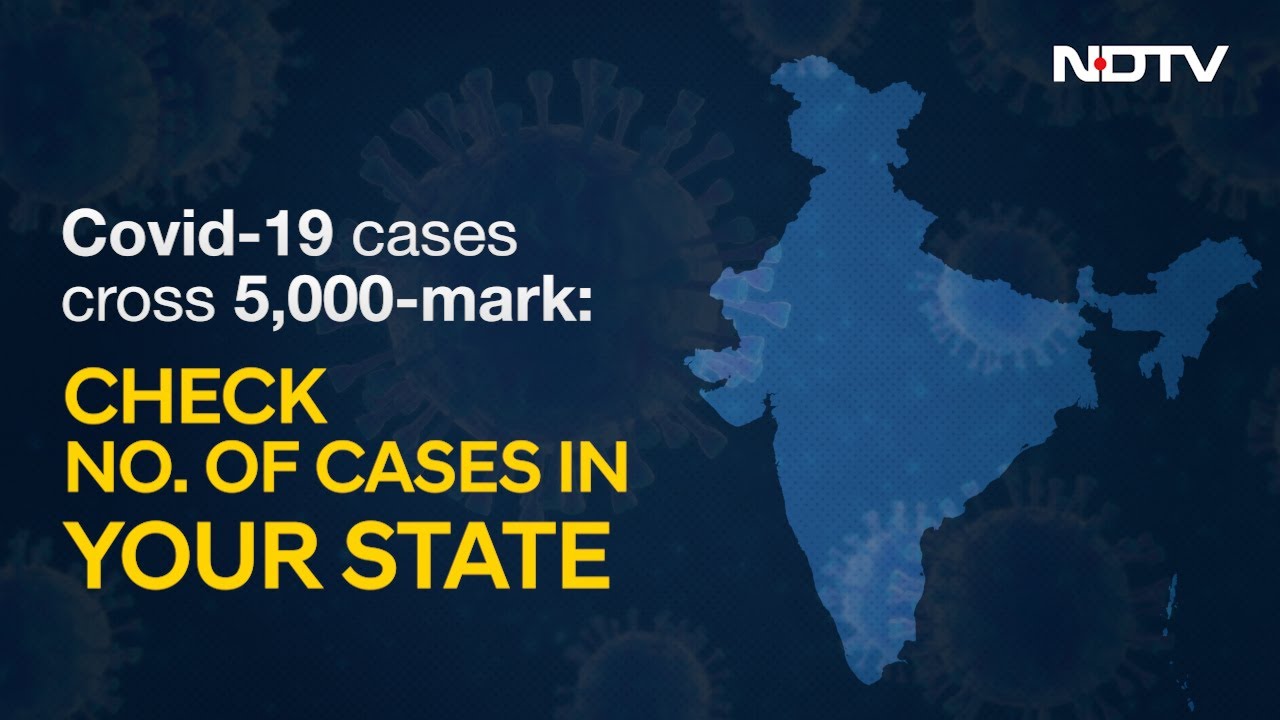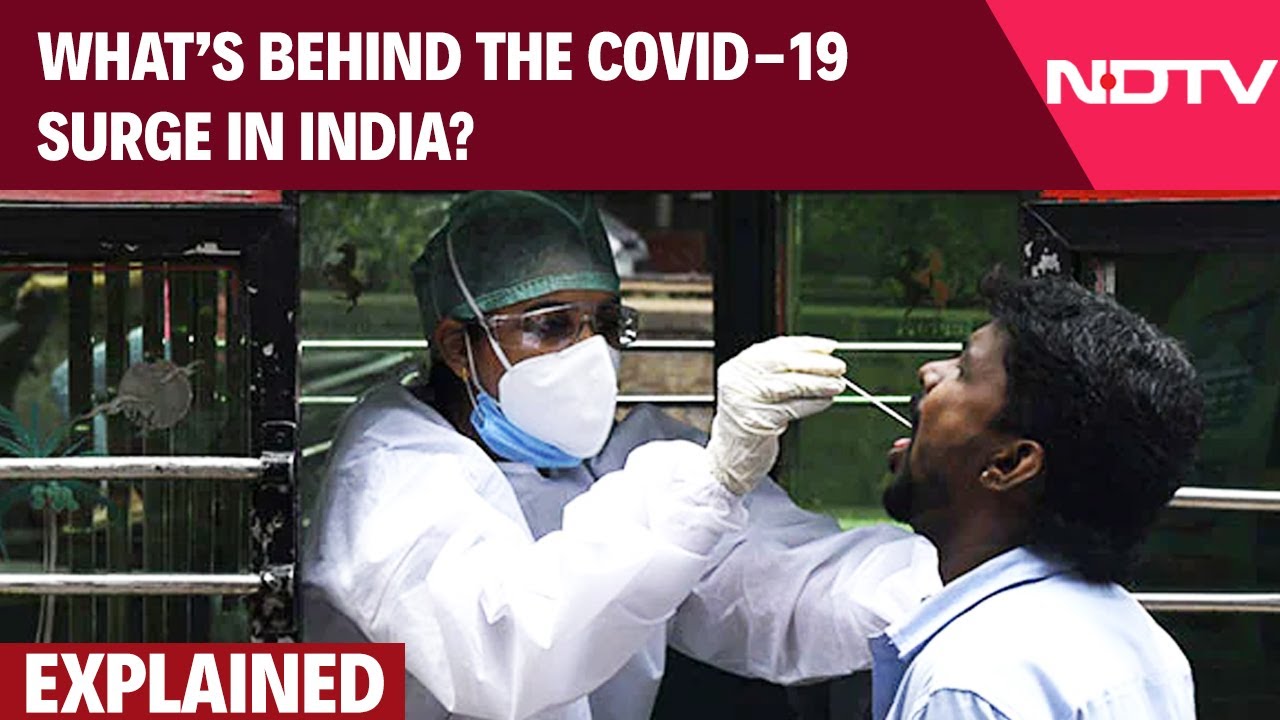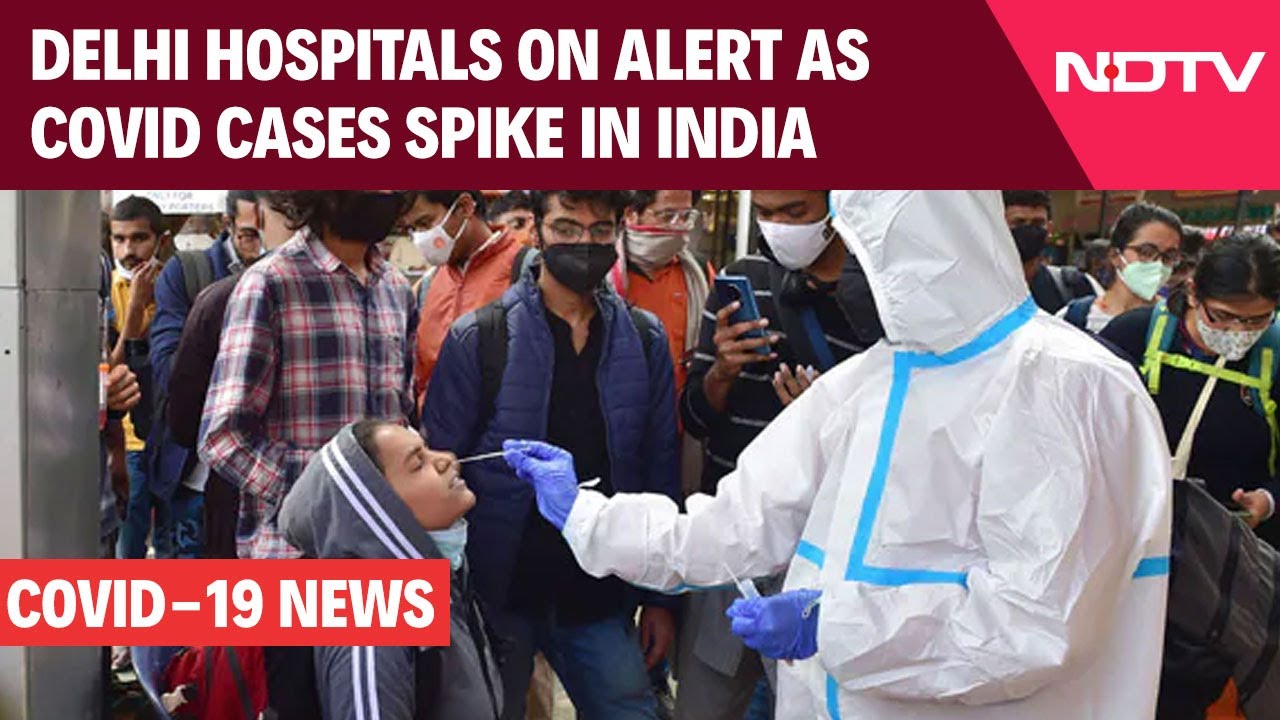home
videos
Shows
ndtv-special-ndtv-24x7-
Special: Prannoy Roy + Gita Gopinath + Siddhartha Mukherjee
Special: Prannoy Roy + Gita Gopinath + Siddhartha Mukherjee
With evidence now that the lockdown in India has succeeded in significantly slowing down the spread of Coronavirus, Prannoy Roy talks to top experts including Gita Gopinath of the IMF and Dr Siddharth Mukherjee to evaluate what steps need to be taken to insulate India against the economic and medical effects of the pandemic.
Here are the highlights of Dr Prannoy Roy's Coronavirus Townhall:

The lockdown is working, the government data shows. Most of the states are showing improvement in their coronavirus figures.

Punjab turns a corner after a sharp peak in growth of coronavirus cases post lockdown.

Karnataka has successfully shown a steady decline in the number of coronavirus cases after lockdown.

Maharashtra finally showing decline in coronavirus cases after lockdown. The number of testing has been scaled up.

After a sharp peak in coronavirus infection rate, Gujarat is now on a downward trajectory.

Coronavirus lockdown has been largely successful in West Bengal, but the state needs to test more.

Delhi is at its lowest coronavirus infection rate since lockdown, cases now doubling every 23 days.

Kerala, India's most successful state, attacked coronavirus even before lockdown. It has the lowest infection rate.

The death rate in Andhra Pradesh is 3 per cent, its double rate is 18 days.

In Bihar, the lockdown is successful here, but more testing is needed in the state.

Infection rate is high in Madhya Pradesh. Cases are doubling every 4.5 days.

After a frightening spurt in the number of cases, Odisha now has the doubling rate of 23 days, which suggests lockdown is a success.

The doubling rate in Rajasthan is relatively high. But the state has seen some improvement.

Lockdown is a major success in Telangana. The doubling rate here is 18 days.

After a bad start, Tamil Nadu has sharply brought down the spread of the infection.

In UP, the number of cases is doubling every 10 days.
Sidhartha Mukherjee: Load of the virus and immune system matters.
Crucial aspect is not to expose yourself to high doses of the virus.
Your job is to expose less to the virus.
Gita Gopinath: So many countries have economic crisis.
Over a 100 countries have approached IMF for financing. We are rapidly responding to that.
We identify that the need must be around 100 billion dollars.
KV Raghavan on how did the pandemic start
Wuhan market theory may be true.
It did move from an animal to a human
But this is not limited to that
Scientific theory: Bats carry certain viruses; Corona was discovered in bats in 2003
Coronavirus has transformed causality with high fatality.
The virus overwhelms the body.
Dr Roy: If you're walking around and if bats fly around, should we be terrified?
KV Raghavan: No. Not at all. Not all bats carry viruses. They are important to the ecosystem. Be careful, don't eat fruit that they might have eaten.
Dr Roy: Can cats, dogs - pets be infected?
KV Raghavan: Not enough evidence.
Devi Sridhar on virus prediction two years ago
There was always a worry of animal to human transmission.
Scientific community is pretty confirmed it came from bats.
Dr Roy: Is there any particular reason why more British-Asians are dying of the virus in UK?
Chand Nagpal: Yes, very sad that the first 10 doctors who died were from Asia minorities.
33% beds occupied by Asian minorities in UK.
No one can really say why. We are looking at it. Have called upon the UK government to look into it.
The possible reason could be that the Asians suffer from hypertension, diabetes.
P Bardhan, Economist: Announcement of lockdown was sudden and unplanned. It was done without taking care of food and shelter for many. It created dislocation and destitution.
I suggest three things (1) Various kinds of community kitchens (2) High time we start on MNREGA-like program in urban areas (3) Instead of laying off people in private companies, there should be a stop on the layoffs, and the government should provide wage subsidies.
L Ramakrishnan, Microbiologist: India is in a better position. India's numbers looking good at the moment.
Gita Gopinath on how much India should be spending
We really commend the government on the way they imposed the lockdown.
The government has done good on cash, food and cash transfers.
Very difficult to compare different economies.
India can do more on the part of migrant workers. This is a global shock.
Priority should be health. More spending in the health sector. More health infrastructure.
Putting money in the hands of the poor. Need to ramp up fiscal spending.
P Bardhan: I think the actual need is much more than what has been announced. There should be a spending of 5-6% of the GDP.
Almost half the country's population is affected. 1 per cent of the GDP not enough.
L Ramakrishnan: Many similarities between TB and Covid-19.
Both transmit through respiratory routes
The difference between them is that TB spreads through small droplets, coronavirus spreads through big droplets.
Both have asymptomatic infections, but the TB's asymptomatic patients don't spread the virus.
Devi Sridhar: Yes, it becomes easier when you are able to catch virus. Like in the TB.
Exponential growth of the virus is a big worry.

Dr Roy on the importance of masks
Countries that wear masks have lower number of cases.
Countries that don't wear masks: US, UK Spain, Italy
Those who wear: S Korea, Japan, Singapore
Siddharatha Mukherjee: Even a simple mask works. We haven't studied this. This is based on assumption. Risk to Reward Ratio for masks is very high.
Gita Gopinath: Never seen such a big crisis, requests for help are unparalleled.
We have scaled up rapid financing to the developing countries.
Main focus to provide concessional finance.
Devi Shridhar on what India should do
Contain the virus, keep the numbers low.
Containment through testing capacity, decentralised response important.
Lockdown is freezing time, it is like putting a pause.
P Bardhan: Need people back to harvest the Rabi crop.
A survey shows large percentage of the workforce has already lost its job.
It's important that the FCI releases the crops to PDS. They have a lot in their stock.
Here are the highlights of Dr Prannoy Roy's Coronavirus Townhall:

The lockdown is working, the government data shows. Most of the states are showing improvement in their coronavirus figures.

Punjab turns a corner after a sharp peak in growth of coronavirus cases post lockdown.

Karnataka has successfully shown a steady decline in the number of coronavirus cases after lockdown.

Maharashtra finally showing decline in coronavirus cases after lockdown. The number of testing has been scaled up.

After a sharp peak in coronavirus infection rate, Gujarat is now on a downward trajectory.

Coronavirus lockdown has been largely successful in West Bengal, but the state needs to test more.

Delhi is at its lowest coronavirus infection rate since lockdown, cases now doubling every 23 days.

Kerala, India's most successful state, attacked coronavirus even before lockdown. It has the lowest infection rate.

The death rate in Andhra Pradesh is 3 per cent, its double rate is 18 days.

In Bihar, the lockdown is successful here, but more testing is needed in the state.

Infection rate is high in Madhya Pradesh. Cases are doubling every 4.5 days.

After a frightening spurt in the number of cases, Odisha now has the doubling rate of 23 days, which suggests lockdown is a success.

The doubling rate in Rajasthan is relatively high. But the state has seen some improvement.

Lockdown is a major success in Telangana. The doubling rate here is 18 days.

After a bad start, Tamil Nadu has sharply brought down the spread of the infection.

In UP, the number of cases is doubling every 10 days.
Sidhartha Mukherjee: Load of the virus and immune system matters.
Crucial aspect is not to expose yourself to high doses of the virus.
Your job is to expose less to the virus.
Gita Gopinath: So many countries have economic crisis.
Over a 100 countries have approached IMF for financing. We are rapidly responding to that.
We identify that the need must be around 100 billion dollars.
KV Raghavan on how did the pandemic start
Wuhan market theory may be true.
It did move from an animal to a human
But this is not limited to that
Scientific theory: Bats carry certain viruses; Corona was discovered in bats in 2003
Coronavirus has transformed causality with high fatality.
The virus overwhelms the body.
Dr Roy: If you're walking around and if bats fly around, should we be terrified?
KV Raghavan: No. Not at all. Not all bats carry viruses. They are important to the ecosystem. Be careful, don't eat fruit that they might have eaten.
Dr Roy: Can cats, dogs - pets be infected?
KV Raghavan: Not enough evidence.
Devi Sridhar on virus prediction two years ago
There was always a worry of animal to human transmission.
Scientific community is pretty confirmed it came from bats.
Dr Roy: Is there any particular reason why more British-Asians are dying of the virus in UK?
Chand Nagpal: Yes, very sad that the first 10 doctors who died were from Asia minorities.
33% beds occupied by Asian minorities in UK.
No one can really say why. We are looking at it. Have called upon the UK government to look into it.
The possible reason could be that the Asians suffer from hypertension, diabetes.
P Bardhan, Economist: Announcement of lockdown was sudden and unplanned. It was done without taking care of food and shelter for many. It created dislocation and destitution.
I suggest three things (1) Various kinds of community kitchens (2) High time we start on MNREGA-like program in urban areas (3) Instead of laying off people in private companies, there should be a stop on the layoffs, and the government should provide wage subsidies.
L Ramakrishnan, Microbiologist: India is in a better position. India's numbers looking good at the moment.
Gita Gopinath on how much India should be spending
We really commend the government on the way they imposed the lockdown.
The government has done good on cash, food and cash transfers.
Very difficult to compare different economies.
India can do more on the part of migrant workers. This is a global shock.
Priority should be health. More spending in the health sector. More health infrastructure.
Putting money in the hands of the poor. Need to ramp up fiscal spending.
P Bardhan: I think the actual need is much more than what has been announced. There should be a spending of 5-6% of the GDP.
Almost half the country's population is affected. 1 per cent of the GDP not enough.
L Ramakrishnan: Many similarities between TB and Covid-19.
Both transmit through respiratory routes
The difference between them is that TB spreads through small droplets, coronavirus spreads through big droplets.
Both have asymptomatic infections, but the TB's asymptomatic patients don't spread the virus.
Devi Sridhar: Yes, it becomes easier when you are able to catch virus. Like in the TB.
Exponential growth of the virus is a big worry.

Dr Roy on the importance of masks
Countries that wear masks have lower number of cases.
Countries that don't wear masks: US, UK Spain, Italy
Those who wear: S Korea, Japan, Singapore
Siddharatha Mukherjee: Even a simple mask works. We haven't studied this. This is based on assumption. Risk to Reward Ratio for masks is very high.
Gita Gopinath: Never seen such a big crisis, requests for help are unparalleled.
We have scaled up rapid financing to the developing countries.
Main focus to provide concessional finance.
Devi Shridhar on what India should do
Contain the virus, keep the numbers low.
Containment through testing capacity, decentralised response important.
Lockdown is freezing time, it is like putting a pause.
P Bardhan: Need people back to harvest the Rabi crop.
A survey shows large percentage of the workforce has already lost its job.
It's important that the FCI releases the crops to PDS. They have a lot in their stock.
































